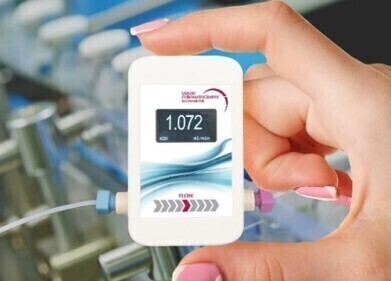HPLC, UHPLC
Confining Micropollutants — Chromatography Investigates
Sep 24 2015
Micropollutants are found in many water systems at very low levels. Synthetic and natural compounds can form micropollutants —and in some cases are considered a health hazard having long-term health impacts. Substances including antibiotics — that can spread antibiotic resistant genes — and bisphenol products — endocrine disruptors — are examples of micropollutants found in water systems.
One method to clean dirty water is to use adsorption — which is the adhesion of the pollutant molecules to another surface, activated charcoal is commonly used in filters to purify water. But when the micropollutants are at a very low concentration compared to the naturally water compounds, adsorption processes can run into problems. The effectiveness of the units can be reduced over time as the more concentrated organic matter collects on the units.
A recent study has looked at the use of cyclodextrin polymer coupled with oxidation by potassium permanganate as method of removing micropollutants from water. What is cyclodextrin and can it help to remove the antibiotics from our water supplies?
Cyclodextrin polymer — don't get too cagey
Cyclodextrins are compounds that are made up from sugar molecules bonded together in a ring — cyclic oligosaccharides — and can readily form polymers. Produced from starches, they have properties that mean they are useful in many disparate applications. They are soluble in water and are hydrophilic on the outside, but the inside of the rings — inside the cage — have much lower hydrophilic affinity, meaning the cage can accommodate hydrophobic molecules.
It is the ability to carry hydrophobic molecules in a hydrophilic environments that gives cyclodextrins their importance. They are used as: drug delivery molecules, catalysts in organometallic reactions, used to trap smells in commercial air fresheners and as stationary phases in HPLC columns. With such a pedigree it is perhaps not surprising that they have uses in environmental chemistry.
Confine the micropollutants
In a study reported in Environmental Science and Technology, a team — from the Dalian University of Technology, China — have put the properties of cyclodextrins to use capturing micropollutants and then used potassium permanganate (KMnO4) to recycle the cyclodextrin for further use. KMnO4 is an oxidising agent that is already used to help clean–up water supplies.
The pollutants studied were 13 antibiotics and a flame retardant, and the team tested the cyclodextrin and KMnO4 in clean water and river water to check the effect of natural water components on the efficiency of the process. High performance liquid chromatography (HPLC) was used to monitor the adsorption performance of the cyclodextrin in removing the pollutants from the water, and in measuring the destruction of the micropollutants by the oxidizing agent. HPLC is extensively used in antibiotic analysis as discussed in the article, Monolithic Silica Columns for Simple and Fast LC-MS Analysis of Antibiotics in Mammalian Tissue and Body Fluid and in Pharmaceutical Formulations.
The study shows that the use of cyclodextrin followed by KMnO4 oxidation is an environmentally friendly method that can reduce micropollutants in a natural water source.
Image by ronymichaud via pixabay.
Digital Edition
Chromatography Today - Buyers' Guide 2022
October 2023
In This Edition Modern & Practical Applications - Accelerating ADC Development with Mass Spectrometry - Implementing High-Resolution Ion Mobility into Peptide Mapping Workflows Chromatogr...
View all digital editions
Events
Jan 20 2025 Amsterdam, Netherlands
Feb 03 2025 Dubai, UAE
Feb 05 2025 Guangzhou, China
Mar 01 2025 Boston, MA, USA
Mar 04 2025 Berlin, Germany



.jpg)








